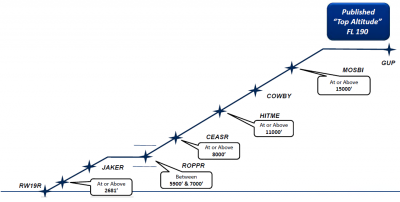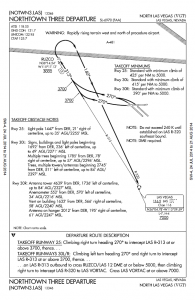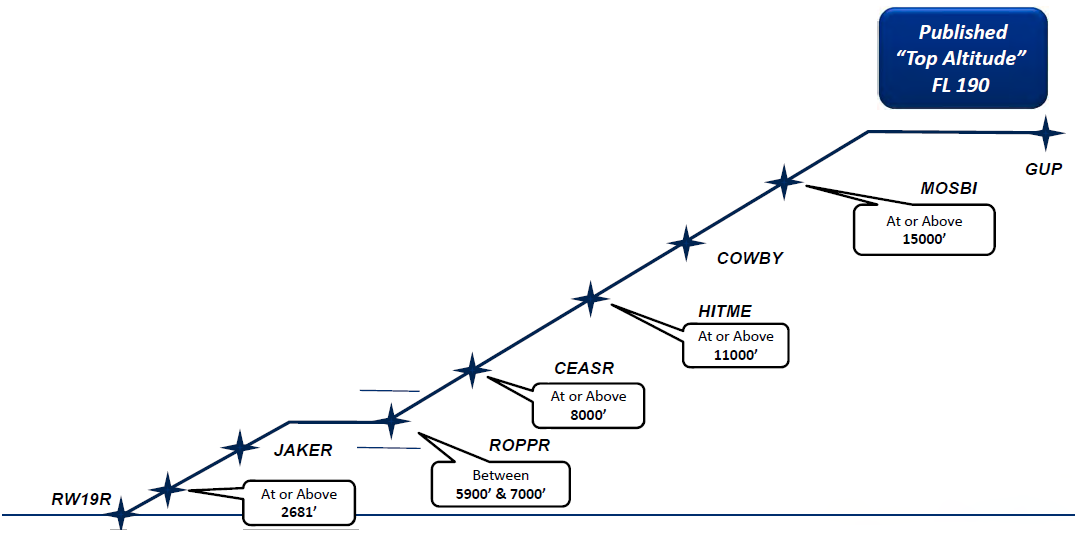Las Vegas. Sin City. What Happens Here, Stays Here. Las Vegas conjures up images of deviance. It’s also a hotbed of pilot deviations.
Nestled in the center of Vegas Valley, surrounded by the Sierra Nevada and Spring Mountains, Las Vegas combines cramped geography with seasons that are hot, windy and dry. Maximum temperatures often exceed 100 degrees F in the summer, sucking the life out of aircraft engines. A dense combination of airports tucked under the Class B airspace of McCarran International (the ninth busiest airport in the US) makes navigating the Vegas Valley a supreme challenge. Departure Procedures, in particular, are fraught with potential for error.
The FAA is trying to make things better.
A Plague of Deviations
The North Las Vegas (KVGT) Northtown Departure is notorious for pilot deviations. As one controller told me:
[It] has been causing a lot of pilot deviations over the years and no one has figured out an appropriate way to change it. We’ve had pretty much every type of aircraft from 1970-something C172’s to Super King Airs bust the departure. Our management has tried everything from having us polling pilots as to whether they understand the clearance is “as published” (as if there was another way to fly?) to verifying that the departure gives appropriate terrain and obstruction clearance.
On first blush, when you look at this procedure, it does not seem all that complicated. However, the list of pilot deviations reported by ATC is long:
- Pilot departs Runway 25 and turns left direct to the LAS VOR.
- Pilot departs Runway 25 and makes a left turn at RUZCO intersection back to the LAS VOR.
- Pilot departs Runway 25 and makes a right turn through the radial and back direct to the LAS VOR.
- Pilot climbs above altitude restriction at RUZCO.
I suspect a lot of the problems pilots are having turning the wrong way stem from the advent of GPS in the cockpit. I’ll save that topic for another time and instead focus on the last deviation in the list: failure to adhere to the altitude restriction at RUZCO. 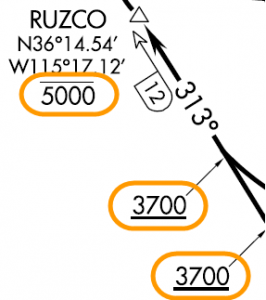
A closer look at the FAA plate for the procedure shows that the altitude restrictions are not all that obvious. We are supposed to intercept the LAS 313 radial at-or-above 3,700′, and remain below 5,000′ until after passing RUZCO. 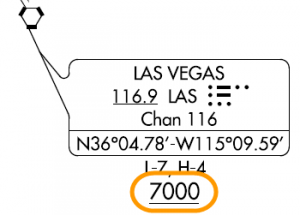
The crossing restriction is at-or-above 7,000′ over the LAS VORTAC.
By the way, these restrictions are much easier to read on Jeppesen charts, which is why I prefer them for instrument procedures.
The question is often asked: if ATC instructs you to “climb and maintain ten thousand,” must you still comply with the altitude restriction, say, at RUZCO? Or is it a clearance to climb directly to 10,000′? Until recently, the answer was not obvious. With the introduction of the Climb via SID phraseology, the instructions have been “clarified.”
“Climb via SID”
Now, if ATC wants you to adhere to all the published altitude restrictions, they will issue a Climb via SID clearance. If they want you to climb unrestricted to the assigned altitude, they will issue a Climb and Maintain clearance.
In theory, this works great. In practice, there can be complications and confusion when ATC wants to adjust your clearance on the fly. The FAA came within 48 hours of implementing Climb Via back in August 2012, but there was a high level of misunderstanding throughout the industry that needed to be addressed before the process could go live. Revised guidance went into effect on April 3, 2014.
You may now expect climb via instructions as part of the initial IFR clearance as well as from ATC on departure. There are a number of great resources available to explain Climb Via already available on the Internet, including:
- AIM 5-2-8
- The FAA’s Climb/Descend Via FAQ
- NBAA Pilot Briefing: Climb Via, Descend Via, Speed Adjustments [this is especially good]
Rather than rehashing these excellent resources, let me give you some rules of thumb to help you understand and interpret Climb via SID clearances. When I started my instrument training, my instructor told me I should always be asking myself: “Which way? How high? How far?” I have revamped this for the Climb Via clearances: Which way? How high? and How fast?
The original intent of Standardized Departure Procedures (SIDs) beyond obstacle protection was to to increase efficiency and reduce communications and departure delays. Consequently, a SID can specify routes to fly (which way), minimum altitudes and altitude crossing restrictions (how high) as well as speed restrictions (how fast).
A key concept to keep in mind is that even though route, altitudes, and speed restrictions are all charted together, you should think of them independently. For the most part, route assignments are separate from altitude assignments, which are separate from speed restrictions. Think of them independently, and you will be less likely to make mistakes.
Which Way?
This is perhaps the easiest part of the departure procedure to interpret. The course to fly for the procedure and each transition is charted quite clearly. It is a mystery why so many pilots can’t simply follow the course as charted in the KVGT Northtown Departure. As I said before, I suspect they are assuming their GPS automation will always work correctly (which is definitely not the case).
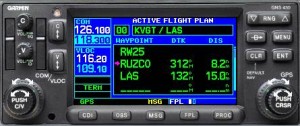 In fact, many older IFR GPSes have not implemented all the NavData path types, and often the GPS can only provide limited automation. In these cases, the pilot must intervene, understand what course guidance the GPS can provide, and then “choreograph his buttonology” to plan how to fly the charted course.
In fact, many older IFR GPSes have not implemented all the NavData path types, and often the GPS can only provide limited automation. In these cases, the pilot must intervene, understand what course guidance the GPS can provide, and then “choreograph his buttonology” to plan how to fly the charted course.
On the Climb via SID clearance, the primary which way consideration is:
Am I on the SID or being vectored?
Often a departure will start with vectors before joining the published SID, or ATC might interrupt a departure with some vectored (e.g., for traffic). You need to keep track of whether you are currently on the procedure or not.
If you are being vectored, then you are not flying the charted procedure; charted altitude restrictions do not apply. This can become tricky when ATC vectors you off a SID temporarily. If you were previously assigned a Climb via SID altitude that now no longer applies, ATC must assign you a Climb and Maintain altitude.
Similarly, if you are told to rejoin the SID, ATC would need to reissue the Climb via SID altitude if that’s what they expect.
Here it is important to emphasize that we fly in partnership with ATC. They are human and exhibit the same kinds of mistakes with new procedures as pilots. When getting a clearance that feels incomplete or is at all confusing, key up the microphone and ask for clarification. It is going to take a while for these new procedures to become second nature for both pilots and controllers.
How High?
The beauty of the new Climb via SID clearance is that it makes it clear that you must comply with the altitude restrictions. The key element in the Climb via SID clearance is the top altitude. If you are ever assigned a Climb via SID, the first question you must answer is, “What is my top altitude.”
The top altitude can be either:
- Published on the chart, e.g.,
 ,or
,or - Assigned by ATC, e.g., Climb via SID except maintain ten thousand.
There are a couple of gotchas here:
- Sometimes there are published altitude restrictions above the published or ATC-assigned top altitude.
You must level off at the top altitude even if subsequent published altitude restrictions still apply. The top altitude is the highest you can go.
ATC must issue a further climb clearance so you can meet the further climb restrictions. If they fail to do so, you need to ask for a climb in time to meet the restriction or ask for a hard altitude assignment (i.e., overriding the Climb via SID clearance).
- Sometimes a SID does not publish a top altitude.
In the case of the KVGT NOTWN3 departure, the last published altitude instruction is:
Cross LAS VORTAC at or above 7000.
An at-or-above altitude restriction is not a top altitude. You have not been instructed to maintain any particular altitude. Thus, if ATC wants to assign you a Climb via SID on this particular departure procedure, they must also explicitly assign you a top altitude. The clearance should be of the form:
Climb via SID except maintain ten thousand.
I know this sounds odd, because there is no published top altitude to be the exception to, but it is the phraseology that ATC must follow. Think of “except maintain” as codewords for “your top altitude is ….” Most importantly, THIS IS NOT AN EXCEPTION TO THE OTHER INTERMEDIATE ALTITUDES. Receiving this clearance for the NOTWN3 departure, you would still be expected to cross RUZCO at-or-below 5,000′, then cross LAS at-or-above 7,000′, then maintain 10,000′.
If ATC issues you a Climb via SID on the KVGT NOTWN3 departure and neglects to assign you a top altitude, make sure to ask for one.
How Fast?
Some SIDs have speed restrictions. In most the aircraft I fly, speed restrictions are not an issue, but if you are flying something speedy, you have to keep them in consideration. The most important point to remember is that as long as pilots are flying on a SID procedure, they must comply with those speed restrictions independent of a “Climb Via” or “Climb & Maintain” clearance.
ATC anticipates pilots will begin accelerating after passing a speed restriction commensurate with normal aircraft operations, but will not exceed the next speed restriction, if any, published on the SID.
One difference with the speed restrictions is: if vectored off a SID route segment where a published speed restriction applies, pilots are expected to maintain the published speed restriction until further advised.
More details on the interplay of speed restrictions and Climb via SID clearances can be found in the excellent NBAA Pilot Briefing: Climb Via, Descend Via, Speed Adjustments.
Conclusion
Pilots and controllers have a new tool at their disposal with the Climb via SID clearance. It is going to take a while for both pilots and controllers to fully master this new phraseology. Remember, any time you are not sure what is expected from your clearance, ask for clarification. Don’t be yet another pilot deviant in the Vegas Valley.

